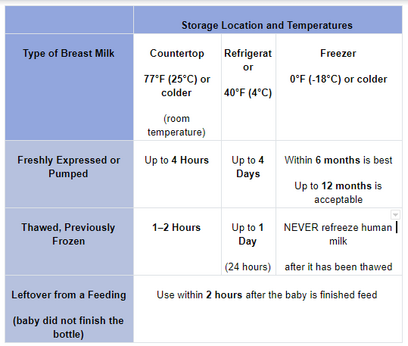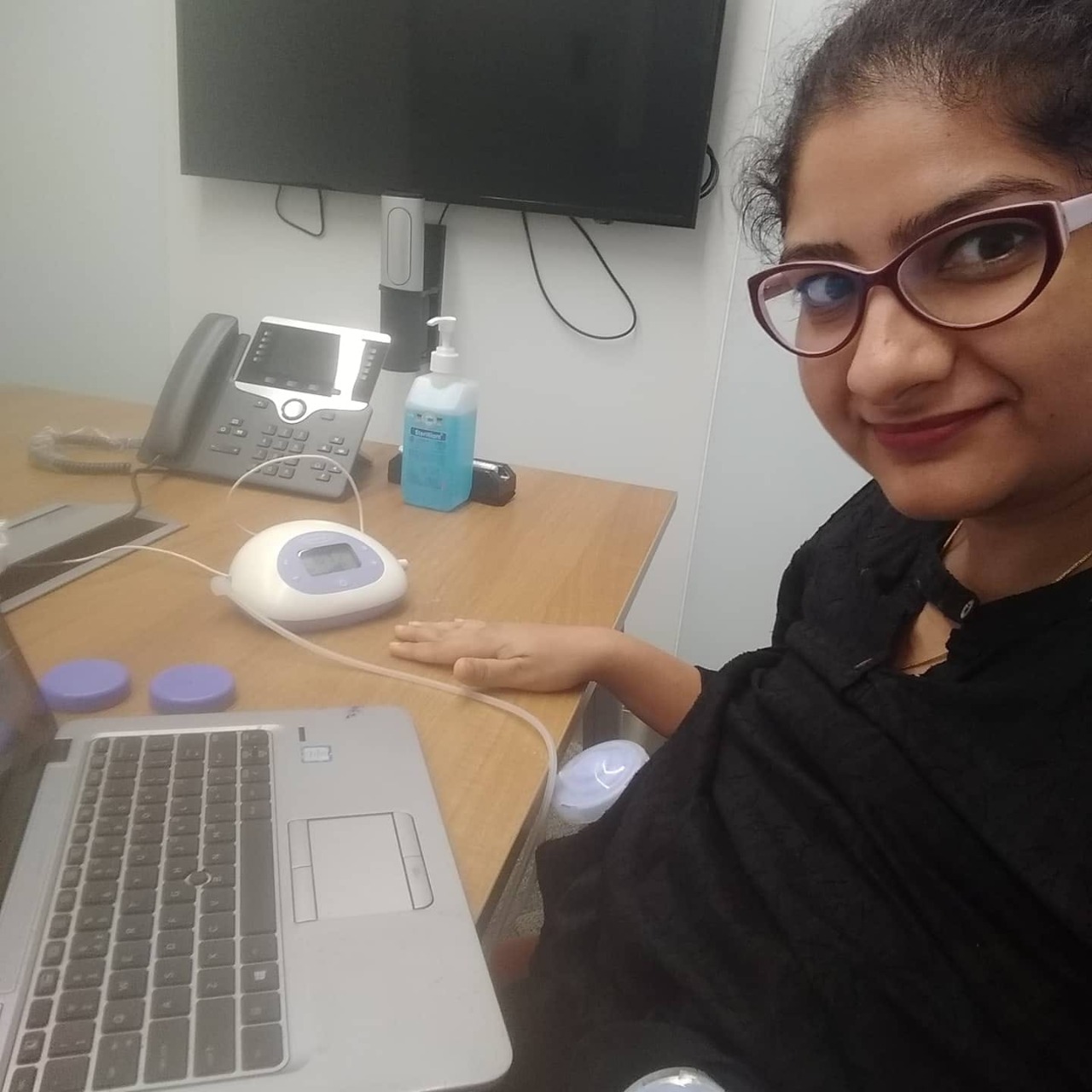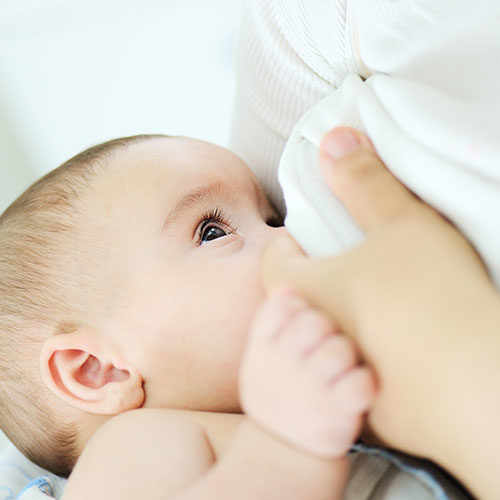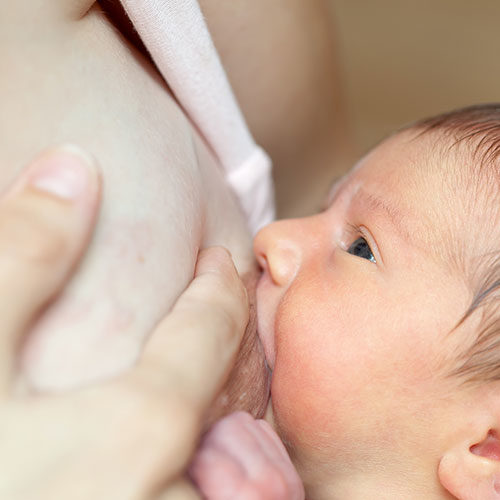Expressing is a way of removing milk from your breast without your baby needing to suckle.
- Your partner or someone else is going to feed your baby in your absence
- In case of truly low supply (after being assessed by a Lactation Professional) You want to produce more milk, as expressing can boost your supply by creating more demand on breasts. Expressing along with direct feeding can also lead up to oversupply related issues
- You must be away from your baby, for example, if she’s in special care, NICU, PICU or you go back to work.
- Your breasts are uncomfortable and very full (engorged). If this happens, then hand expressing some milk can help you feel more comfortable.
- If your baby can’t suckle well or can’t take milk straight from your breast at first. Or if you or your baby has a condition or illness that makes breastfeeding difficult for the time being.
- Whether you are hand expressing or using a pump, always wash your hands before you start and make sure any equipment you’re using has been sterilized
- Please do not express breastmilk in a toilet or a bathroom.
- It’s helpful to get in the right mood too. The more relaxed you are, the easier it will be. The hormone oxytocin is released in your body when you’re feeling happy and relaxed, and that’s what causes your milk to be released (let down). Sometimes that’s hard if your baby is ill or if you’re feeling rushed and stressed. Start with the Massage – Stroke – Shake Method a. Massage the breast: b. Stroke the breast from the chest wall to the nipple with a light tickle-like stroke. Continue this stroking motion from the chest wall to the nipple around the whole breast. c. Shake the breast gently while leaning forward
- Holding your baby or sitting near her, looking at a picture of her, or holding and smelling her clothes can all help.
- By Hand
- By Manual Pump
- By Electric Pump
- Stress can affect letdown but not supply. Relax and take deep breaths as this enables the mother to have a letdown. Watching your baby’s videos/ photos/ doing other tasks that relax you can help with letdown and thereby a higher yield.
- It is always a good practice to massage your breasts prior to hand expressing. a. Massage from the armpit to the areola b. Stroke the breasts around all ducts c. Hold the entire breast and shake it All of the above should be done gently The above steps are useful to stimulate the breasts to have a higher yield of milk.
- Sit upright with back support in a position that you are comfortable in.
- Keep a wide mouthed container you want to collect milk in, below the nipple.
- Hold your breast with your fingers and thumb cupped around your breast in a C shape or U Shape.
- Press your fingers and thumb back, towards your chest.
- Gently squeeze to compress your breast between your fingers and thumb while sliding your fingers towards your nipple without lifting the fingers off the breast.
- Release the compression without moving your hand from the breast. Repeat the squeeze and compression until no milk flows.
- Change the angle of the U/ C hold and cover all angles similar to the hands of the clock by moving your hand to different parts of the breasts.
- Try to apply and release pressure rhythmically just like a baby would nurse.
- You can stop once you are getting no milk from all angles.
- Over time, some mothers find that they can collect more milk by compressing specific milk ducts.
- Some women find it easier to use a pump. Whether you use a manual or an electric pump will depend on what you’re comfortable with, how often you need to express and how much milk you need to produce. Some electric pumps allow you to express both breasts at the same time.
- Most pumps work in a similar way. You put a suction cup and funnel attachment over your nipple and areola. This mimics how your baby suckles, stimulating your milk to flow. If you’re using a manual pump you repeatedly squeeze a handle to create the pumping action. If you’re using an electric pump, the machine does this for you.
- Expressing shouldn’t be painful, but if you’re experiencing any pain, or you’re finding it difficult, speak to your Lactation Consultant
- It can take anywhere between 15 minutes and 45 minutes to pump both your breasts. Don’t use time to guide you, though. Just pump for as long as your milk is flowing well. Change breasts when the flow slows down. Keep changing between breasts. Even if you’re only getting a small amount out, it all adds up.
- If you only need to express the odd feed, expressing by hand or using a cheaper manual pump may work best. If you’d like to pump regularly at home, a standard electric pump may be the best choice for you.
- If you need to produce lots of milk because your baby can’t feed from your breast, you may want a hospital-grade double electric pump. Many hospitals will have these pumps on the wards, and you can also hire them for use at home.
- When using a breast pump, try these tips: a. Sit comfortably, with your back straight. b. Support your breast from underneath. Place your fingers flat on your ribs, with your first finger between your breast and your ribs. c. Ease your nipple into the funnel, making sure that your nipple is in the center. It’s important to make sure you’ve got a good fit. If too much areola is pulled into the funnel it can make your nipples sore. A tight funnel can also inhibit your milk flow. Many pumps come with a selection of funnel sizes so choose one that’s right for you. d. Keep the funnel close enough to maintain a seal with your skin, without forcing it on to your breast. e. Be patient. It often takes a minute or two for your milk to flow well.
- If you’re using an electric pump, you can sometimes change the force of the suction on it. If you can, start on a lower strength and build up. If you start with a high strength it can be painful and may damage your nipples.

Table Credits : https://kellymom.com/bf/pumpingmoms/milkstorage/milkstorage/
These are general guidelines for storing human milk at different temperatures. Various factors (milk volume, room temperature when milk is expressed, temperature fluctuations in the refrigerator and freezer, and cleanliness of the environment) can affect how long human milk can be stored safely.
Storage of Breastmilk after expressing
- Use breast milk storage bags or clean food-grade containers with tight fitting lids made of glass or plastic to store expressed breast milk.
- Avoid bottles with the recycle symbol number 7, which indicates that the container may be made of a BPA-containing plastic.
- Never store breast milk in disposable bottle liners or plastic bags that are not intended for storing breast milk.
- Freshly expressed or pumped milk can be stored:
a. At room temperature (77°F or colder) for up to 4 hours.
b. In the refrigerator for up to 4 days.
c. In the freezer for about 6 months is best; up to 12 months is acceptable. Although freezing keeps food safe almost indefinitely, recommended storage times are important to follow for best quality.
Storage Tips
- Clearly label the breast milk with the date it was expressed.
- Do not store breast milk in the door of the refrigerator or freezer. This will help protect the breast milk from temperature changes from the door opening and closing.
- If you don’t think you will use freshly expressed breast milk within 4 days, freeze it right away. This will
help to protect the quality of the breast milk. - Freeze breast milk in small amounts of 2 to 4 ounces (or the amount that will be offered at one feeding) to avoid wasting breast milk that might not be finished.
- When freezing breast milk, leave about an inch of space at the top of the container because breast
milk expands as it freezes. - If you will be delivering breast milk to a childcare provider, clearly label the container with the child’s name and talk to your childcare provider about other requirements they might have for labeling and
storing breast milk. - Breast milk can be stored in an insulated cooler bag with frozen ice packs for up to 24 hours when
you are traveling. Once you arrive at your destination, milk should be used right away, stored in the
refrigerator, or frozen. - Breast milk expressed at different times can be mixed only at same temperature
- When breast milk expressed at different times is mixed, the expiry date of the formerly expressed milk
is applicable.
Safe Thawing for Breastmilk
- Always thaw the oldest breast milk first. Remember first in, first out. Over time, the quality of breast
milk can decrease. - There are several ways to thaw your breast milk:
- In the refrigerator overnight.
- Set in a container of warm or lukewarm water.
- Under lukewarm running water.
- Never thaw or heat breast milk in a microwave. Microwaving can destroy nutrients in breast milk and create hot spots, which can burn a baby’s mouth.
- Use breast milk within 24 hours of thawing in the refrigerator (this means from the time it is no longer frozen or completely thawed, not from the time when you took it out of the freezer).
- Once breast milk is brought to room temperature or warmed after storing in the refrigerator or freezer,
it should be used within 2 hours. - Never refreeze breast milk once it has been thawed.
Feeding Breastmilk – Refer to alternatives to bottles here
- In an open cup/tonic cup
- In a syringe for preterm babies
- Via Spoon
- In a beaker with a simple valve/Paladai
- Via Paced Bottle Feeding method



Wish to speak with a member of our team who is a certified lactation professional and also an experienced breastfeeding mother, click on this link.
Medical Advice Disclaimer
THIS WEBSITE DOES NOT PROVIDE MEDICAL ADVICE.
The information, including but not limited to, text, graphics, images and other material contained on this website are for informational purposes only. No material on this site is intended to be a substitute for professional medical advice, diagnosis or treatment. Always seek the advice of your physician or other qualified health care provider with any questions you may have regarding a medical condition or treatment before undertaking a new health care regimen, and never disregard professional medical advice or delay in seeking it because of something you have read on this website.
Disclaimer
We understand and acknowledge that parents and babies can be of various genders on a spectrum of LGBTQI+. Families come in diverse flavours. However, in our articles, for the sake of simplicity and convenience, we will be referring to the breastfeeding parent as the mother and using the female pronouns- ‘she’ and ‘her’ for babies. Babies can be nourished and nurtured in different ways and while we have used the terms breastfeeding and nursing, we recognize that parents can opt to chest feed or finger feed.
We don’t have conflicts of interest and declare, and we are compliant with the WHO code of marketing of breastmilk substitutes and the IMS act.
In case you find any information on this website that needs to be updated, please write to us at info@bsim.org.in






